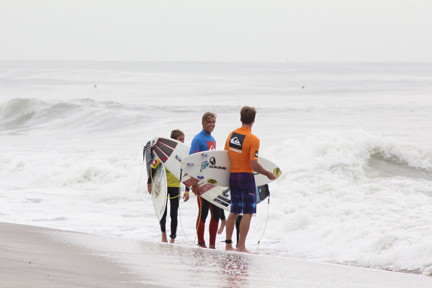City releases revised surfing schedule
New plan similar to last year’s after residents criticized initial proposal
After a tug of war between swimmers and surfers, the city finally released its revised summer surfing schedule last Friday.
Each year, city officials and Chief of Lifeguards Paul Gillespie create a schedule that designates surfing beaches for the summer. The city released a schedule at the beginning of the month, but rescinded it at the May 7 City Council meeting after residents complained that too much beach space was being given over to surfers.
“The … surfing schedule seems to put some undue weight on certain beaches,” City Councilman John McLaughlin said at the meeting. “Maybe we could revamp that schedule to redistribute the beaches a little more fairly.”
The original plan included two permanent surfing beaches and one with limited hours. Surfing was to be permitted seven days a week from Lincoln to Monroe Boulevard and from Maple to Pacific Boulevard, east of the swimming area, and until noon every day from Roosevelt to Neptune Boulevard. The West End and west-central beaches would be rotated on a weekly basis, with three beaches per week designated for surfing only.
A number of residents criticized the plan, however, saying that it favored surfers and that officials did not gather input from residents. Those who live in the western part of the city said it was an inconvenience to have that many beaches in their neighborhoods used for surfing for a number of weeks during the summer.
“I’m offended when I’m criticized for referring to a certain beach spot as my beach,” one resident said. “It is my beach, just like the block I live on is my block. I think surfing is terrific, but they shouldn’t be able to take any beach and keep it as their own.”
But surfers insisted that their numbers are growing in Long Beach, and that the city must adapt to accommodate the influx of surfers. Will Hallet, a member of the Long Beach Surfer’s Association, told the council that surfing is vital to Long Beach, because it attracts visitors that stimulate the local economy.
“We’re all friends and neighbors here,” Hallet said. “Nobody here is looking to unfairly burden anybody. But surfing has exploded among our young people here, and we need to make sure that we do this right.”






